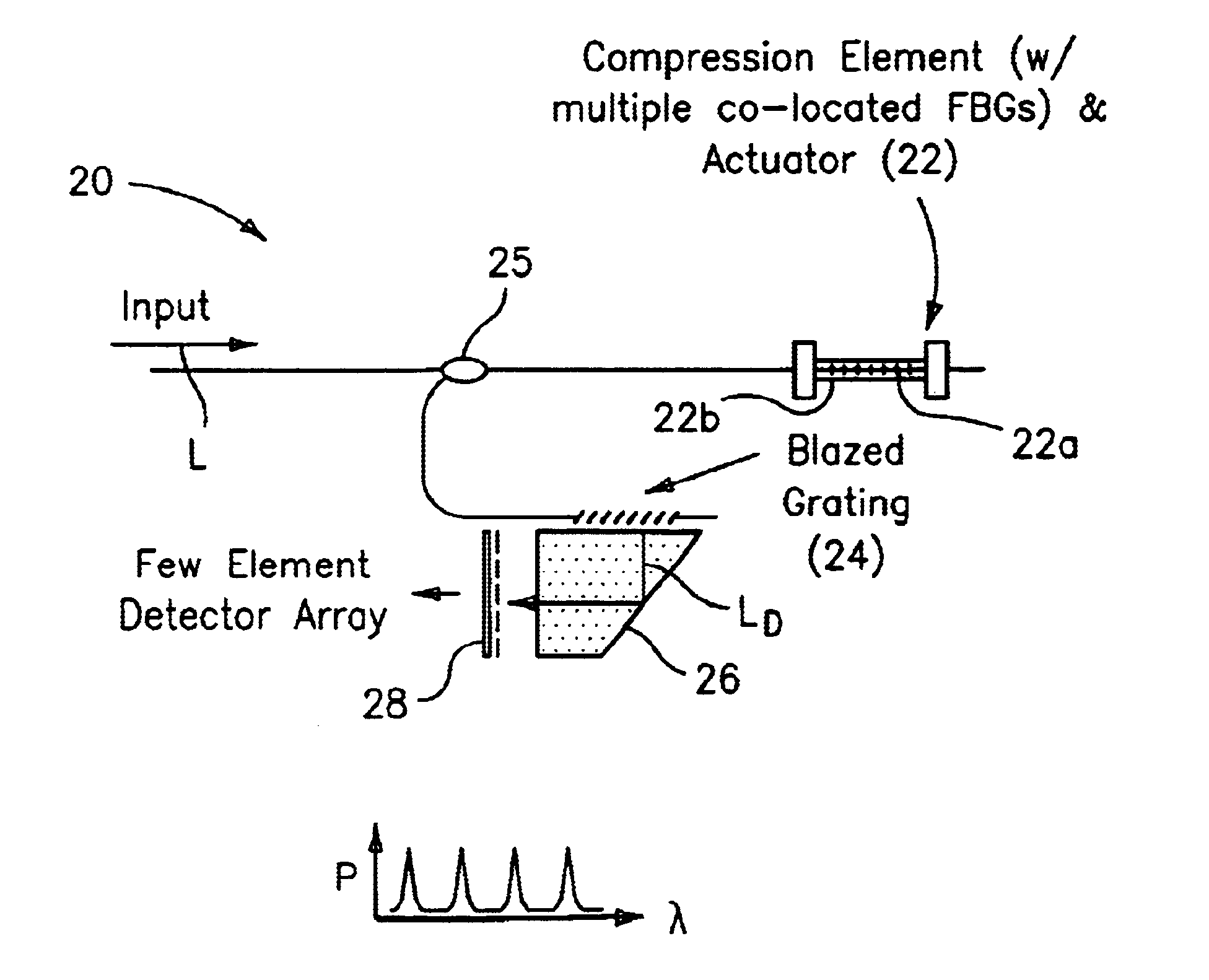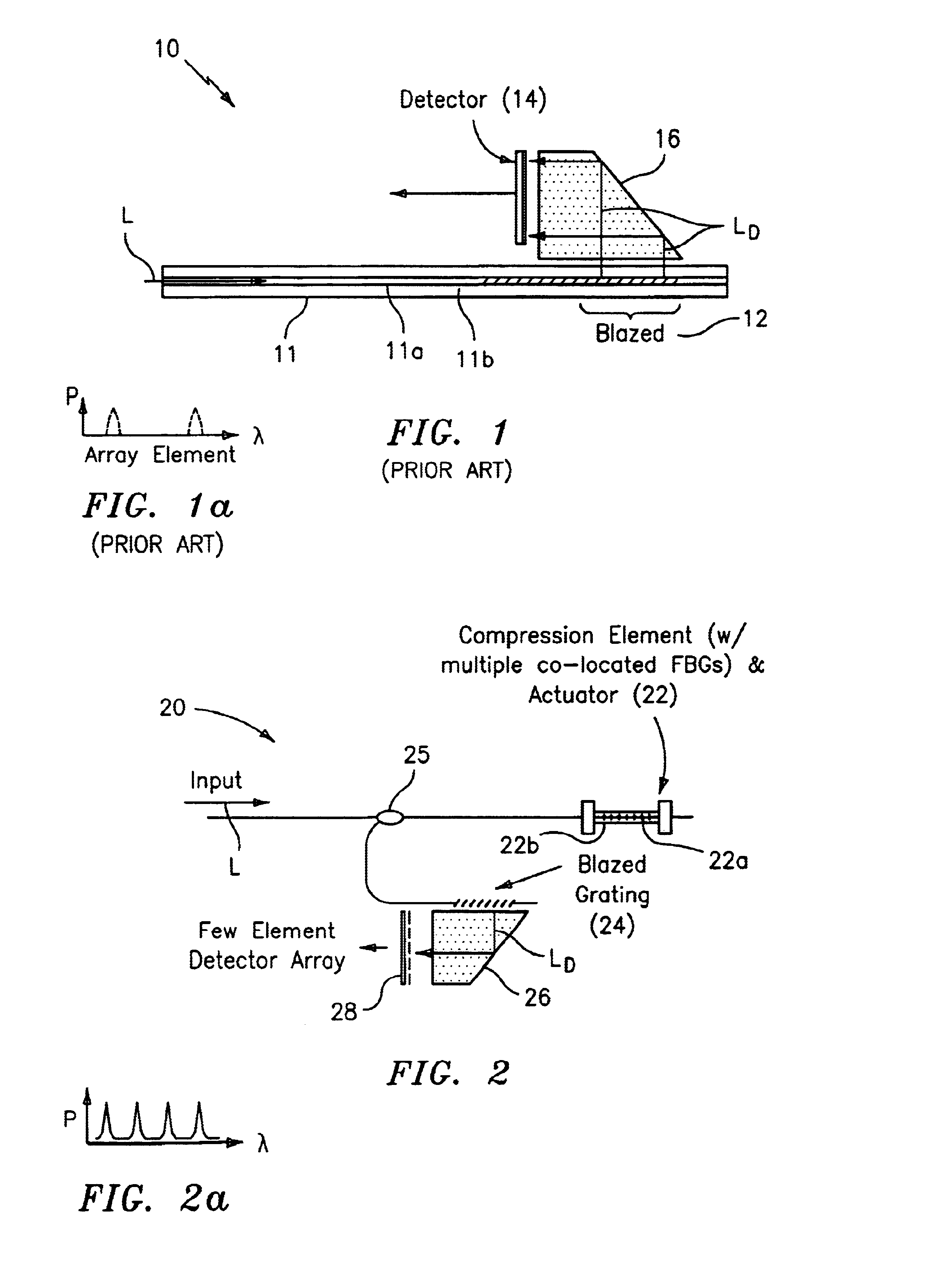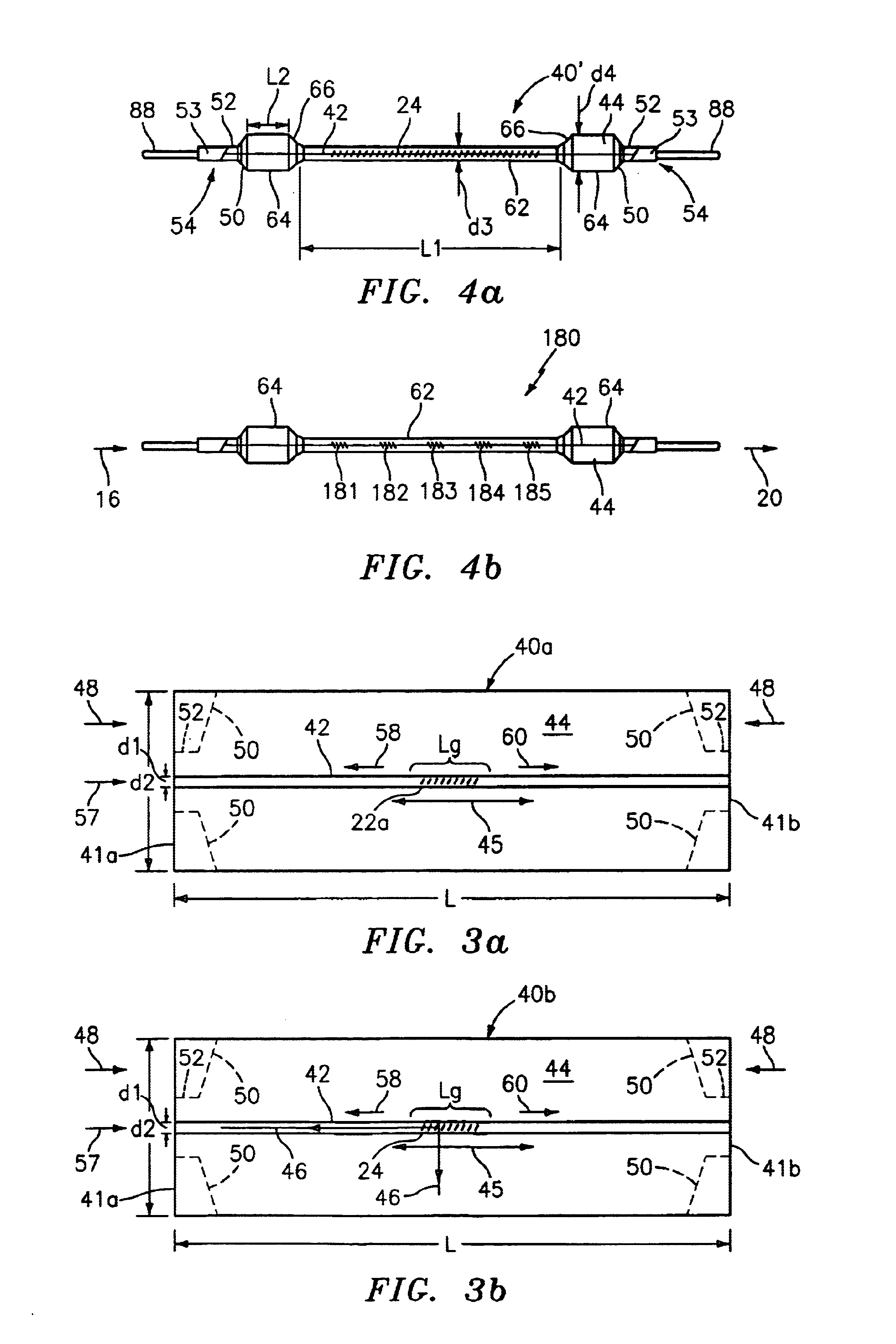Wavelength monitor utilizing a tunable bragg grating and blazed grating
a technology of blazed grating and tunable bragg grating, which is applied in the direction of optical resonator shape and construction, instruments, optical elements, etc., can solve the problems of limiting the ultimate performance of the device, increasing the number of inoperable pixels, and limiting the device's price, so as to achieve a higher resolution wavelength discriminator and less costly components
- Summary
- Abstract
- Description
- Claims
- Application Information
AI Technical Summary
Benefits of technology
Problems solved by technology
Method used
Image
Examples
Embodiment Construction
FIG. 2: The Basic Invention
FIG. 2 shows, by way of example, a wavelength monitoring device or system generally indicated as 20 in accordance with the present invention. The wavelength monitoring device 20 has a compression element and actuator generally indicated as 22 with a Bragg grating 22a and has a blazed grating 24. In operation, the incoming light L is directed from a coupler 25 onto one or more Bragg gratings 22a located in a glass element 22b which serve to spectrally process the incoming optical signal L. The reflected components of the light L are then directed via the coupler 25 onto the blazed grating 24 which reflects the light out of the fiber core onto a detector array 28. The decoupled light LD is reflected through a member 26. In this configuration, the resolution of the wavelength monitoring device 20 is determined primarily by the one or more Bragg gratings 22a, which reflect only a narrowband portion of the incoming light determined by a bandwidth and shape of a...
PUM
 Login to View More
Login to View More Abstract
Description
Claims
Application Information
 Login to View More
Login to View More - R&D
- Intellectual Property
- Life Sciences
- Materials
- Tech Scout
- Unparalleled Data Quality
- Higher Quality Content
- 60% Fewer Hallucinations
Browse by: Latest US Patents, China's latest patents, Technical Efficacy Thesaurus, Application Domain, Technology Topic, Popular Technical Reports.
© 2025 PatSnap. All rights reserved.Legal|Privacy policy|Modern Slavery Act Transparency Statement|Sitemap|About US| Contact US: help@patsnap.com



